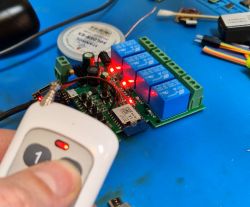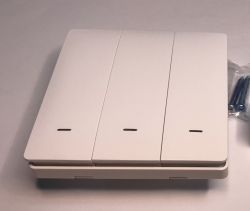FAQ
TL;DR: Need fast Mega 2560 ↔ ESP8266-01 UART shifting? "A level converter certainly wouldn't hurt." Choose parts rated ≥13 Mbps to avoid delays. [Elektroda, kaczakat, post #17503797]
Why it matters: This FAQ helps Arduino Mega 2560 builders connect ESP8266-01 safely over RX/TX without unwanted latency or IO damage.
Quick Facts
- Mega 2560 uses 5V logic; ESP8266-01 is 3.3V. Shift Mega TX→ESP RX; ESP TX→Mega RX often works directly. [IO Level Conversion ESP8266]
- 2N7000/BS170 MOSFET bidirectional circuits are common for UART level shifting with minimal parts per line. [MOSFET Voltage Level Converter]
- ST2378E buffer IC is rated up to 13 Mbps, keeping serial overhead negligible at typical UART rates. [Elektroda, kaczakat, post #17503797]
- 74LVC1T45 is a fast single-bit translator suitable for one UART line per chip. [Elektroda, tantalos1, post #17506328]
- Claims of ESP8266 5V-tolerant IO exist but are not in the datasheet; use at your own risk. [Is ESP8266 IO Really 5V Tolerant?]
What’s the fastest reliable way to level-shift Mega 2560 and ESP8266-01 UART?
Use a dedicated logic translator IC. The 74LVC1T45 is a simple, very fast choice when you allocate one per UART line. Keep traces short and decoupling close to the chip. This minimizes propagation delay and ringing at higher baud rates. [Elektroda, tantalos1, post #17506328]
Can I skip the level shifter and drive ESP8266 pins with 5V from the Mega?
Some community sources cite 5V-tolerant IO claims, but this is not in Espressif’s datasheet. Running 5V into 3.3V parts risks latent or immediate failure. Use a proper shifter or divider to protect the module and ensure predictable behavior. [Is ESP8266 IO Really 5V Tolerant?]
Is a simple resistor divider enough for Mega TX → ESP RX?
Yes. A two-resistor divider drops the Mega’s 5V TX to 3.3V for ESP RX. ESP TX can usually go directly to the Mega RX since 3.3V reads as a logic HIGH on many Arduino inputs. Keep wiring short to reduce edge distortion. [IO Level Conversion ESP8266]
Will a 2N7000 MOSFET bidirectional shifter work for RX and TX?
Yes. The classic MOSFET-level shifter (2N7000/BS170/BSS138) can translate between 5V and 3.3V. Use one channel per UART direction. Provide appropriate pull-ups and good grounding for clean transitions. It’s inexpensive and widely proven by hobbyists. [MOSFET Voltage Level Converter]
How do I build a 2N7000 level shifter for UART lines?
- Wire the MOSFET and two pull-ups per channel per the standard bidirectional schematic.
- Connect Mega TX→shifter→ESP RX and ESP TX→shifter→Mega RX. Share ground.
- Power ESP at 3.3V, then verify clean edges at your target baud with a scope. [MOSFET Voltage Level Converter]
Where can I find ready-made schematics I can copy?
SparkFun and Adafruit level-shifter boards publish schematics and PCB files. Check each product’s Technical Details tab and linked GitHub resources. These reference designs are convenient starting points for custom builds. [Elektroda, ArtXs, post #17498661]
What baud rates are safe without adding delay?
Pick a translator with bandwidth comfortably above your UART rate. For example, an ST2378E buffer is cited at 13 Mbps, which dwarfs common UART speeds and keeps added delay negligible. Leave margin for wiring and noise. [Elektroda, kaczakat, post #17503797]
Do level shifters add noticeable latency to a 2-second polling loop?
No. With a two-second request interval, any quality level shifter’s propagation delay is negligible. The thread’s use case polls the ESP8266 every two seconds to fetch JSON, where converter delay is not a bottleneck. [Elektroda, rafik73, post #17503961]
Do I need bi-directional or uni-directional shifting for UART?
UART uses separate unidirectional lines, so uni-directional translators per line work well. Many bidirectional MOSFET boards target open-drain buses like I2C. For crisp UART edges, LVC-family or buffer translators are excellent. [Taking it to Another Level — Making 3.3V and 5V Logic Communicate with Level Shifters]
How should I wire Mega and ESP-01 for clean serial?
Connect Mega TX through the level shifter to ESP RX. Connect ESP TX to Mega RX, often directly. Tie grounds together and power the ESP from a stable 3.3V regulator. Keep leads short to reduce ringing. [IO Level Conversion ESP8266]
What if I accidentally powered the ESP-01 from 5V or fed 5V to IO?
Some modules survive brief 5V exposure, but behavior becomes unstable and current draw rises. It is not recommended and risks damage. Correct power to 3.3V and use proper level shifting immediately to avoid intermittent faults. [Elektroda, kaczakat, post #17502678]
Where can I see a 2N7000 solution diagram used in this thread?
The OP shared a working diagram after applying the 2N7000 approach, referencing an Espressif forum thread. Review that shared schematic as a practical baseline. [Elektroda, rafik73, post #17502901]
Do I really need a converter if my setup seems to work anyway?
Yes, use one. As one contributor put it, “A level converter certainly wouldn’t hurt.” It protects the ESP8266 and stabilizes communication, especially as projects evolve or baud rates change. [Elektroda, kaczakat, post #17503797]
Is there a single article that compares level-shifter options?
Yes. Hackaday’s overview explains resistor dividers, MOSFET bidirectional boards, and fast translator ICs, including pros, cons, and speed considerations. It’s a practical primer before choosing a circuit. [Taking it to Another Level — Making 3.3V and 5V Logic Communicate with Level Shifters]






